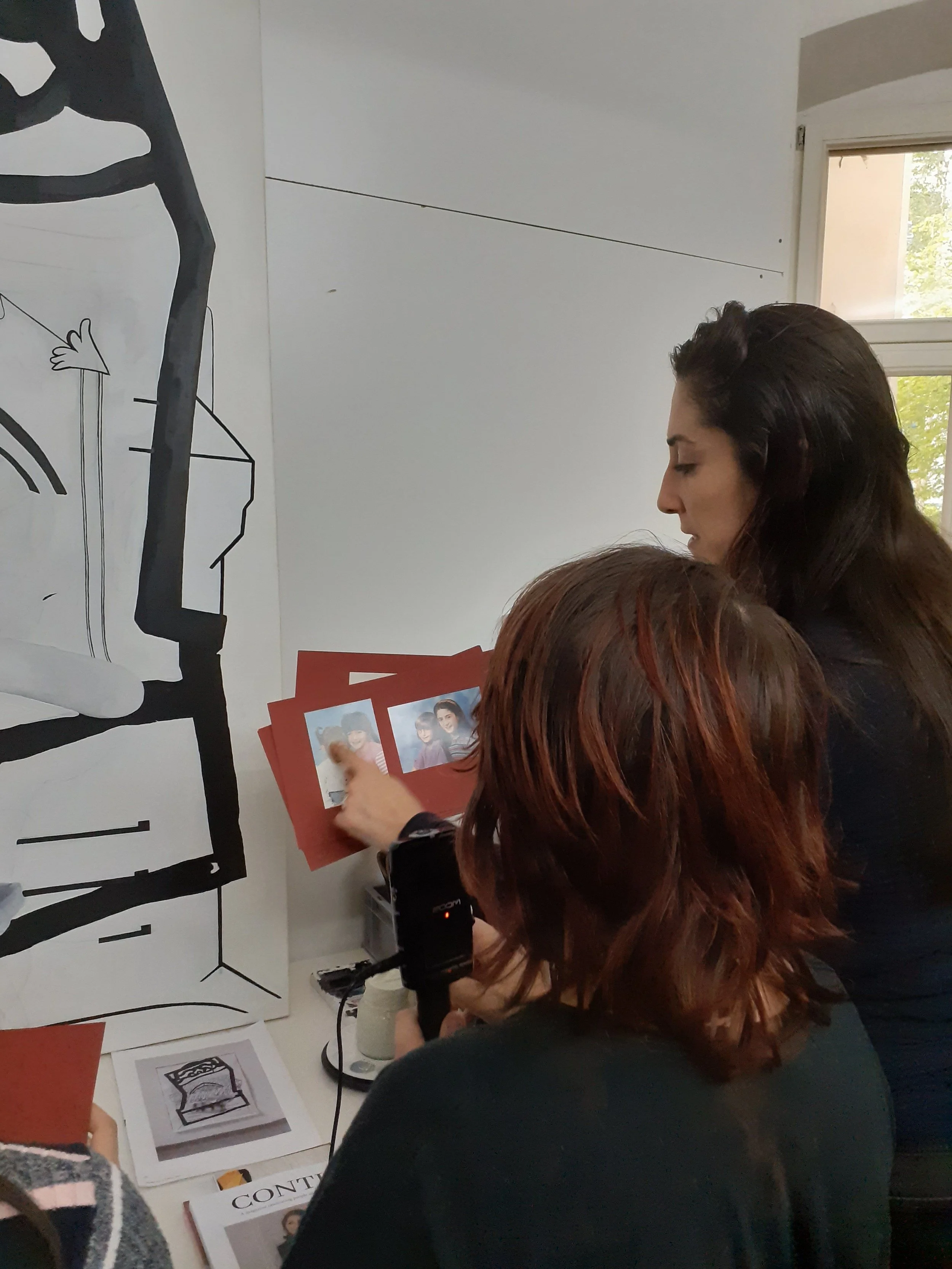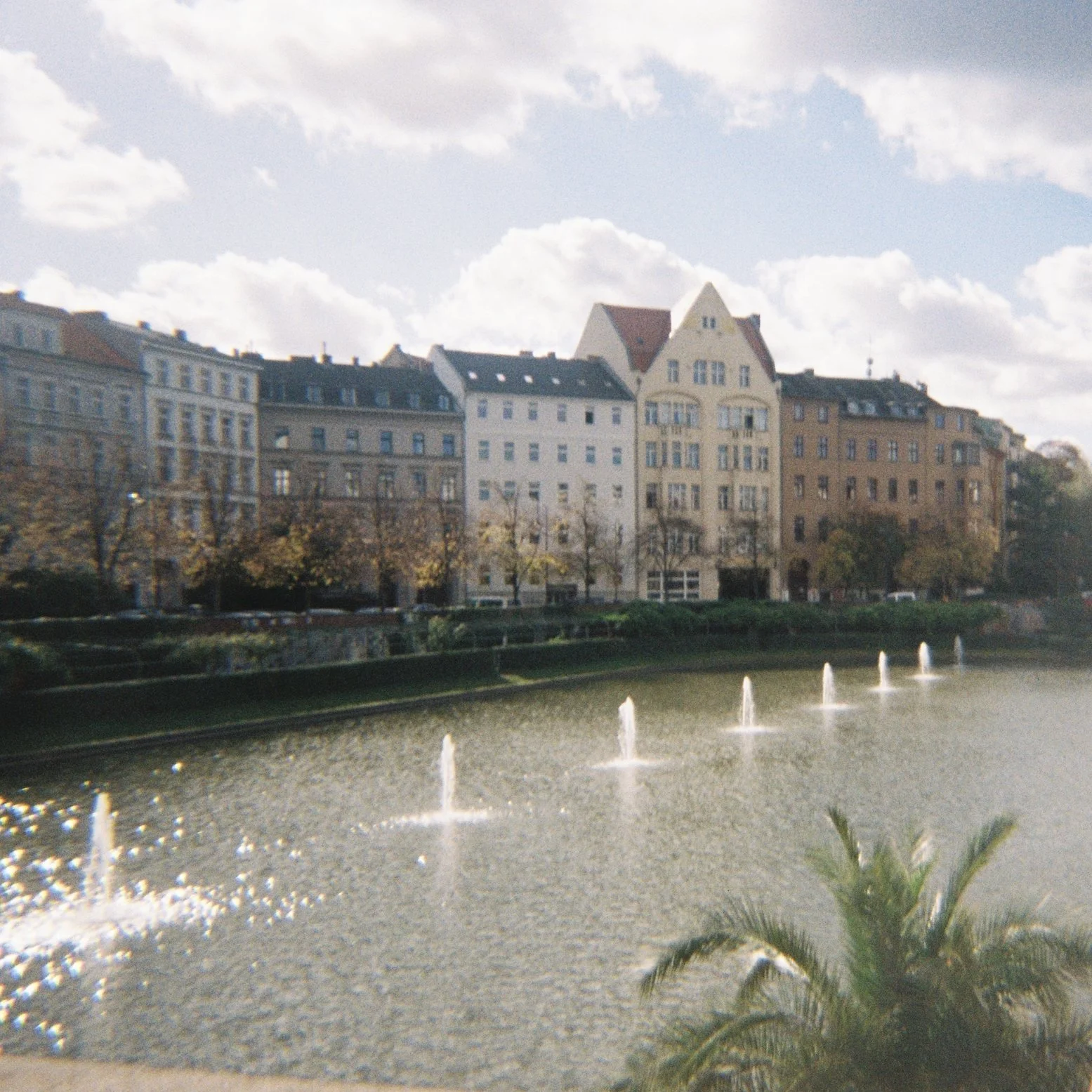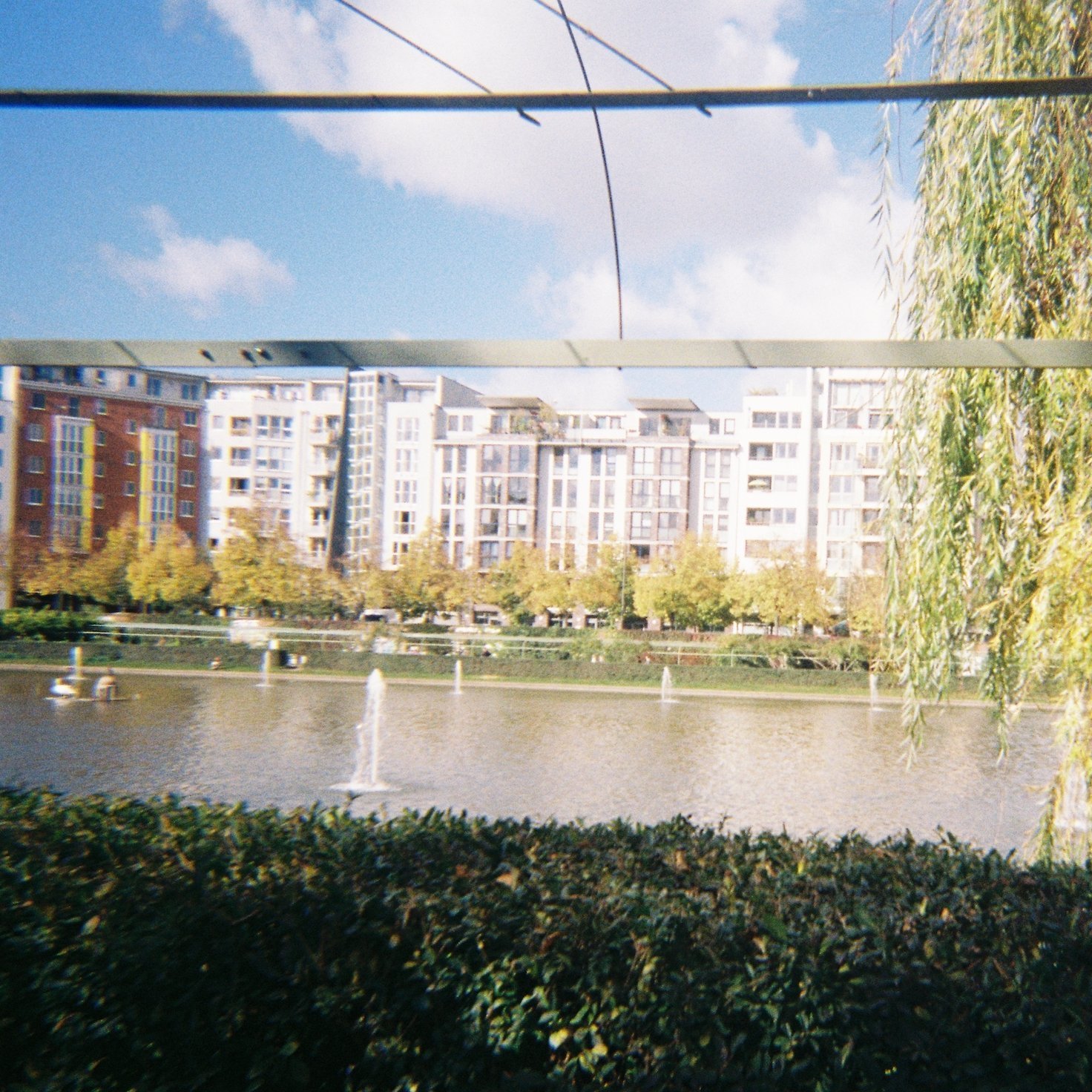Ahu Dural and the art of memory
At Engelbecken in Kreuzberg, Ahu Dural warmly welcomes us to her studio – or rather, to her apartment, where she lives with her husband and five-year-old son. Her study is located between the hallway and the kitchen, and the longest wall of the narrow room consists of a huge “jumble shelf” with thousands of books. Ahu tells us that she really likes books, whether for inspiration, information or simply as decoration (her husband sorts the books alphabetically, but Ahu finds that stupid and much prefers to arrange them by color).
In the cozy, homemade kitchen Ahu prepares warm tea with honey for us while we look around her study: Objects (or sculptures? Or furniture?) are arranged close together in front of the wall of shelves, laminated photographs hang from metal and wooden frames, and notepads, abstract drawings and paintings adhere to the wall. The large work table is littered with old family photos. Looking at them, we quickly realize that Ahu is not a “painter”, “sculptor”, “designer”, or “researcher”, but a little bit of everything.
Ahu knew she wanted to become an artist when she was five. She is very happy about her decision, even if she sometimes feels a bit lonely. She tells us that she works alone a lot and is really only surrounded by people when she shows her work in an exhibition. Her family and her own childhood are particularly important to Ahu, both of which serve as a source of inspiration for her. At the moment, for example, she is writing a book about her mother that mixes the true and the imagined – a novel about a woman who comes to Germany from Turkey and builds a life for herself and her family here. The photos on the table help her remember stories and make up new ones. We even find an enlarged copy of her mother’s work ID, who assembled microchips at Siemens in piecework.
Ahu herself is a true Berliner, born in Wedding and raised in Moabit and Siemensstadt. In addition to family photos, trips to the places of her childhood serve her to better remember the past. For example, two years ago she was at a playground in Siemensstadt where she often played as a child. There she discovered a rocking horse that took her back to that time. In the studio, Ahu then turned her memories into objects, specifically stools with the same saddle-shaped seat as the rocking horse’s. (Some of us are literally sitting on such a memory at this moment).
In addition to her own past and the biographies – that is, life stories – of her family and other people, Ahu finds architecture particularly interesting. That’s why, after the studio visit, we take a walk together around the Angel Basin, about which Ahu really knows a lot: the former canal was turned into a park with an Indian garden (including a Buddha statue) almost 100 years ago. After World War II, however, it was filled in with war debris. After that, the site served as a “control strip” for the Berlin Wall, which ran along the basin. It was not until the 1990s that the area was cleared and the park restored to its original state. Today, we can’t really imagine that such a turbulent past is buried in this beautiful and peaceful place. Ahu, however, finds it insanely fascinating. She is very interested in the thousand layers and stories of Berlin and what they tell us about the city and the people who live and have lived here.
We definitely like this place today – we think it even feels “a bit paradisiacal” here. We head out and capture the many details, fountains and flower beds with analog cameras. Who knows, maybe in the distant future someone will find our photos and remember this paradise with their help...





